

Section 2.1.How do we make use of radiation and nuclear technologies?
Scientists have developed different uses of radiation, including:
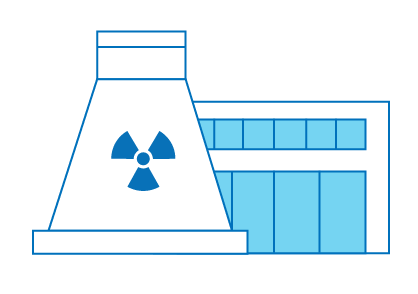 Electricity generation
Electricity generation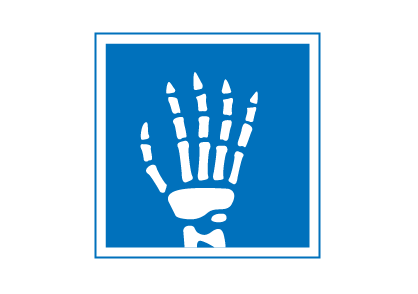 Medical applications
Medical applications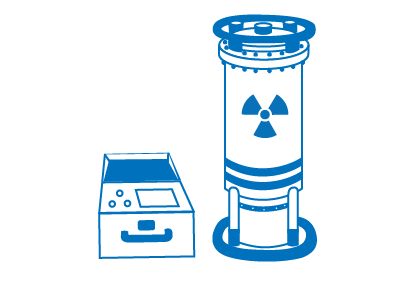 Industrial applications
Industrial applications Archaeology
ArchaeologyRadiation is part of our daily life. With proper use, radiation can be beneficial to the society.
Section 2.2.Nuclear power plants
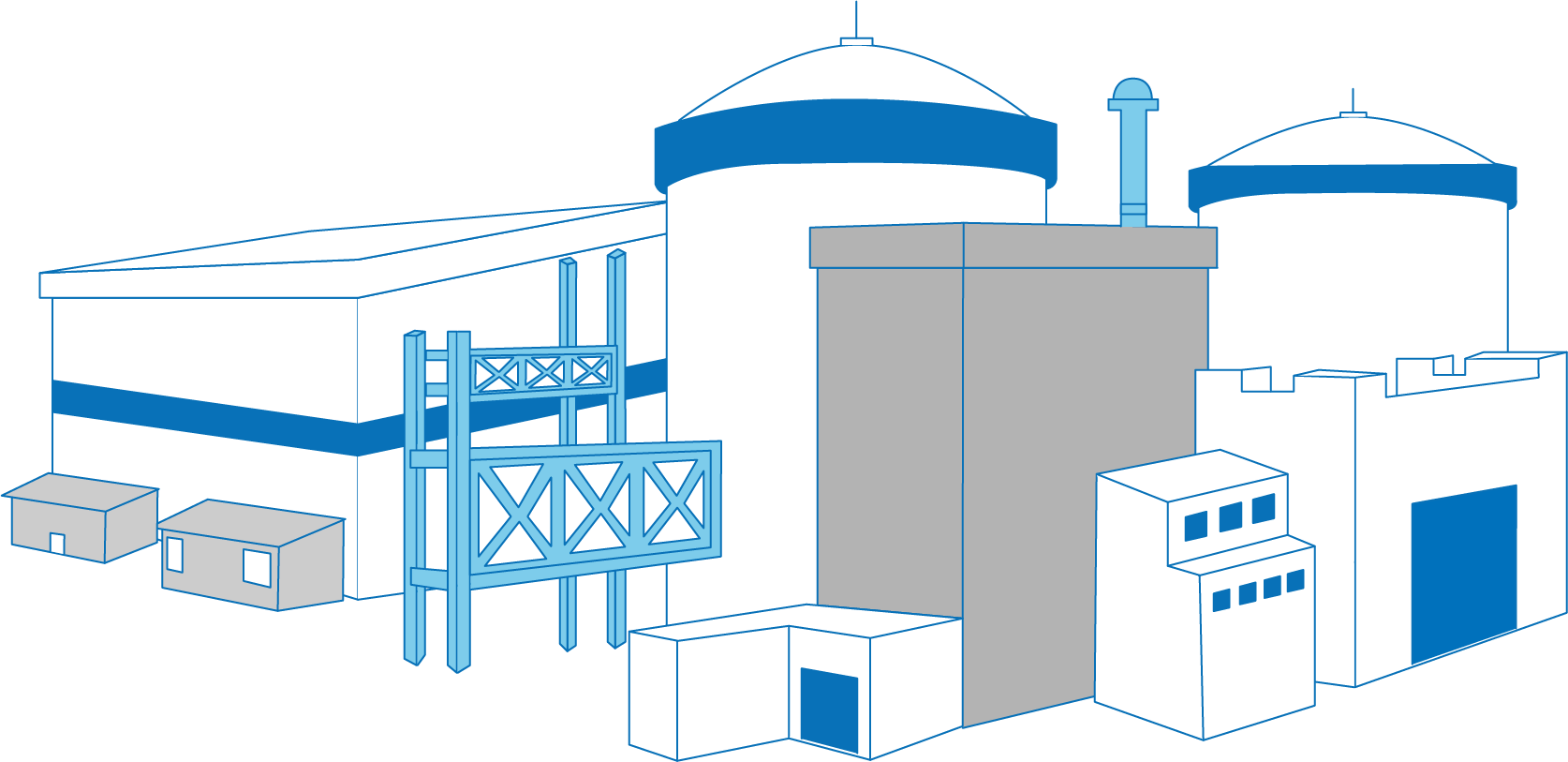
The demand for energy increases with the world's growing population and expanding economy. Nuclear energy is one of the solutions to meet such ever-increasing demand. (Reference: World Nuclear Association)
The Daya Bay Nuclear Power Station is the first large-scale commercial nuclear power station in China, fulfilling around 25% of Hong Kong's electricity needs since 1994. (Reference: CLP Power Hong Kong Limited)
Section 2.3.Medical applications
X-rays
Radiation is widely used for medical diagnosis and therapy, including body and dental X-ray examinations, as well as computed tomography. X-ray is highly penetrating. However, the higher the density of the material it acts on, the lower will be the degree of penetration.
Density comparison of human tissues

Penetration of X-rays in the human body

Penetration of X-rays in the human body

Section 2.3.Medical applications
Radiological diagnosis
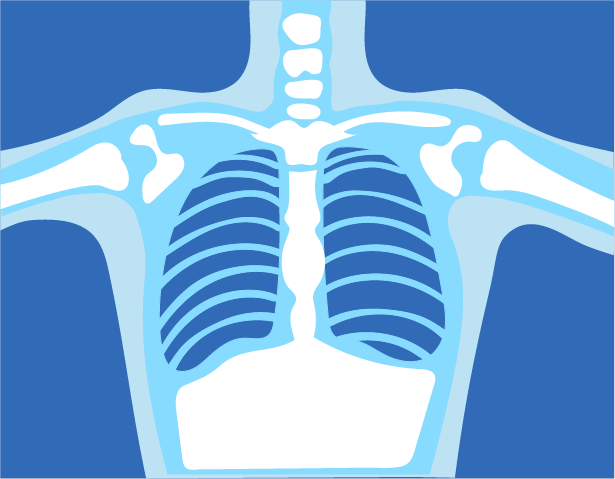

X-rays have different penetration powers to different body tissues, forming images with different black and white contrasts on films. The images can show the distributions and conditions of different body tissues. When necessary, radiographers will use lead sheets to shield other parts of the body which do not require medical diagnosis, in order to reduce the effects of scattered radiation to patients.
Radiotherapy
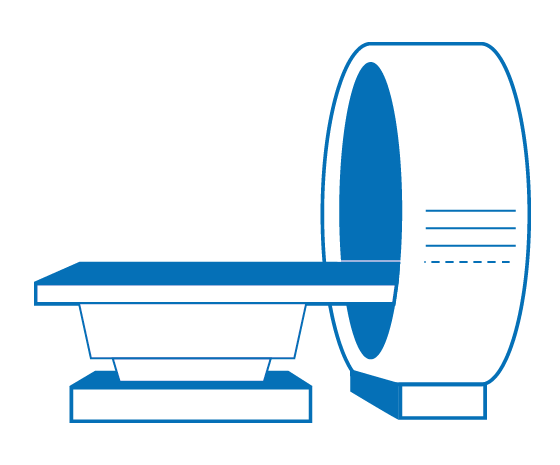
Radiotherapy is a treatment using high-energy radiation to kill cancer cells. Normally an external collimated beam is used to irradiate the region requiring treatment. There are also some cases that radioactive material is placed near a tumour so that the tumour can be irradiated directly.

Section 2.4.Industrial applications
Radiation is also effectively applied in some industrial processes, such as sterilisation of medical utensils and cosmetics, food preservation and quality control.


Sterilisation of medical utensils and cosmetics
X-ray and gamma ray are utilised to control the growth of microorganism or even kill them. They are electromagnetic waves and no poisonous substances will reside after sterilisation. This application is suitable for plastic products, organic materials and medicines which are not high-temperature endurable.

Food preservation
Food preservation by radiation is a food processing technology using gamma rays to extend the shelf-life of food. Cobalt-60 is the most commonly used radioactive source. No radioactivity will reside in food after irradiation.
Quality control
Some Industries such as paper fabrication, plastic processing and steel rolling use radiation in quality control processes to monitor the weight, thickness and density of the products. A wide range of radiation with different penetrating powers is employed for different processes. For example, gamma ray with medium penetrating power is used to irradiate aluminium cans to inspect the capacity filled inside.
Section 2.5.Archaeological applications
Antiquities can be dated by measuring their amount of natural radioactivity inside. Common techniques include "carbon-14 dating" and "thermoluminescence dating", which are very useful in geological, anthropological and archaeological researches.
Carbon-14 dating

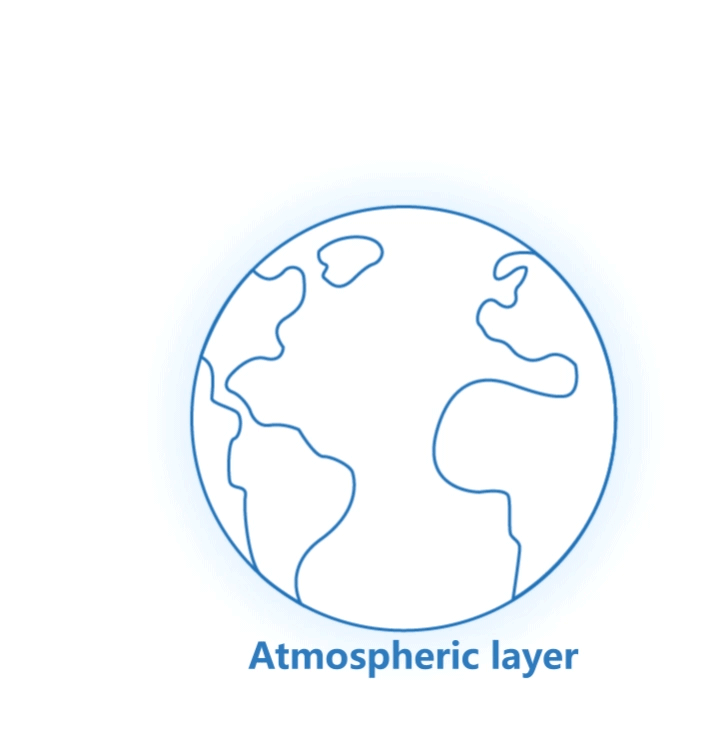
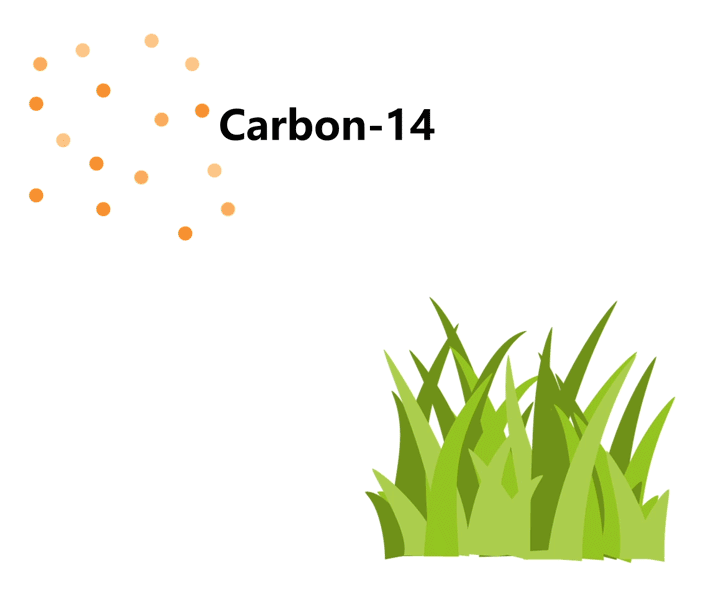

Carbon-14 is produced when cosmic rays bombard the atmosphere. Those carbon-14 will be oxidized to carbon dioxide and absorbed by plants.



The ingestion of plants by animals results in a certain amount of carbon-14 in most organisms.
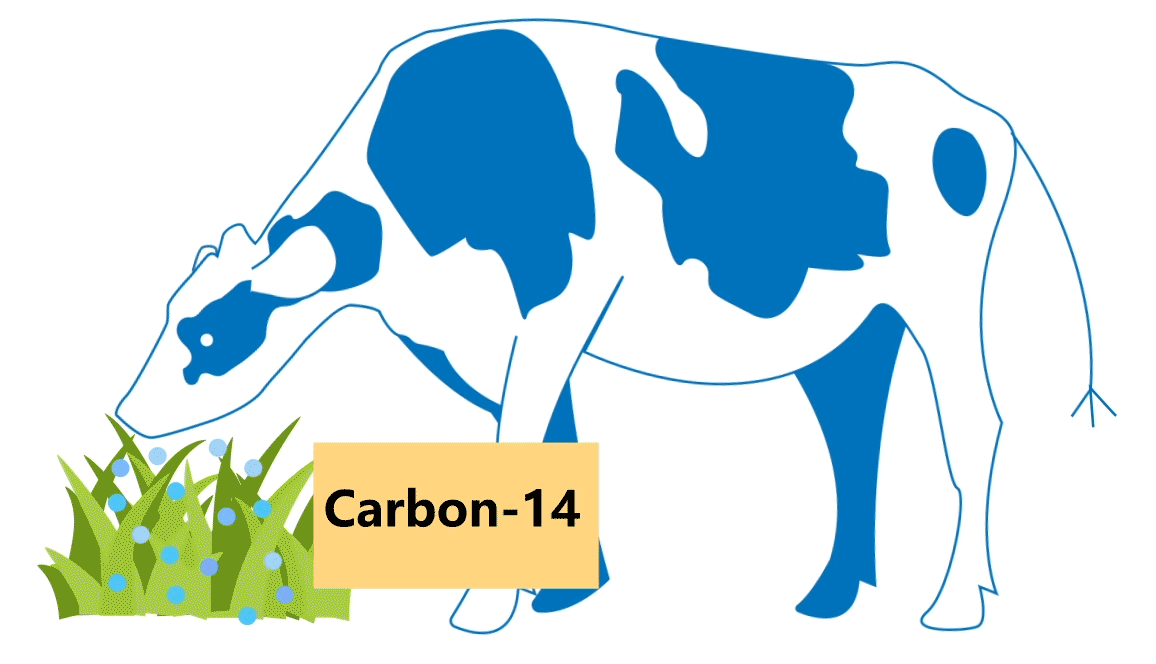

When plants or animals die, the intake of carbon-14 will stop and the amount of carbon-14 in the bones will decrease with time due to radioactive decay.
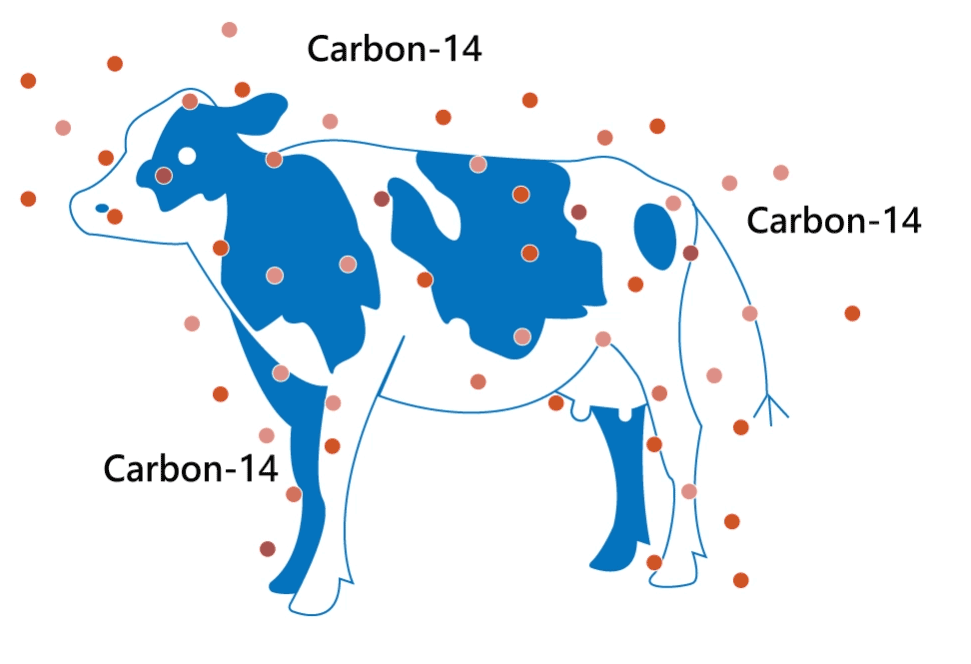
Section 2.5.Archaeological applications
Thermoluminescence dating
Thermoluminescence dating can be used to determine the age of antiquities. The stronger the thermoluminescence emitted by an antiquity, the older it is.
 Older
Older
 More recent
More recent
 Older
Older
 More recent
More recent